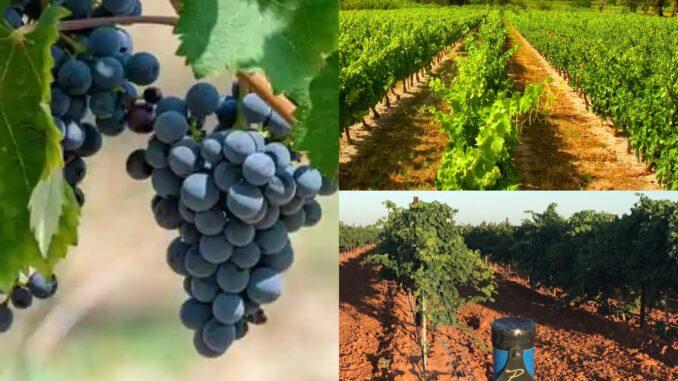
Not too long ago, I quoted Randy Hester, owner and winemaker at Austin’s C.L. Butaud Wines, in a blog. He said, ”For me, Cinsault is a lot like Grenache. In Texas, it shows much better when we lean into its pretty varietal character, showing off the delicate fruit profile and embracing its subtle and savory experience.” That got me thinking – Why Cinsault for Texas?

Cinsault (pronounced San-so) is a red wine grape capable of yielding a full-bodied, deep-colored wine particularly in its home turf of France’s Midi region. According to the winetraveler.com (Credit for photo above), it offers, “bright red berry fruits like cherry, ripe strawberry, and red currant… complimented by black pepper, violets, and mulling spices.” However, in new world locations, often because the vines are either young or pruned to maximize production, Cinsault yields lighter color and body. I think that this is what Randy was getting at in his comments above when he said, ”delicate fruit” and ”subtle and savory experience”. But, primarily because of the characteristic described above, Cinsault is often harvested early and destined for some of the best (and most expensive) Rosé wines in the world.

Jumping back to Cinsault’s original home, The Midi, it is a region comprised of the extensive lowlands and up into mountainous regions in southern France (Aquitaine, Languedoc, and Provence) bounded by Spain and the Pyrenees to the south, by Italy and the Alps to the northeast, the Massif Central on the north, and guess what, the Mediterranean Sea on the south. Expectedly, this region has a prevailing Mediterranean climate.
Wine production began in this region around 2,000 years ago, when the Romans brought their wine culture from Italy and planted their ancient vineyards. The expansive Midi is know for making wines from a wide variety of grape depending on local conditions. They include Malbec in Cahors, Tannat in Madiran, but you can also find Cabernet Franc and Cabernet Sauvignon. Cinsault is often found along with Grenache, Carignan, Syrah and Mourvèdre playing a role in the wines of the Rhône valley notably in Chateauneuf-du-Pape and Tavel. Part of the attraction of Cinsault for winemakers is it flexibility. It is one of the permitted grape varieties in sturdy Cote-du-Rhone red blends and yet it is widely used for the production of rosé wine in Provence.

What does Cinsault have to offer in Texas? Well, it has shown that it handles vineyard heat admirably during the growing season both in its homeland and in new world locations like Lodi and Temecula in California. It shows that it blends well with other red grapes, both those originating from southern France and Spain, as well as more ”noble” varieties like Cabernet Sauvignon. A notable new world version is Europa Village 2017 C’est la Vie Cinsault from Temecula Valley described by Wine Enthusiast as having fennel and licorice aromas meeting with nutmeg, red plum and red flowers on the nose, and on the palate is tart with plum-skin flavors.
As mentioned by world-renowned Languedoc winemaker Gérard Bertrand, “It (Cinsault) is the essence of Mediterranean rosés, light and fruity. It is known for producing fine, elegant rosés with aromas of red fruit, peach and white flowers, with a good balance between liveliness and roundness. It is also found in the red wines of Minervois, Corbières etc. Often associated with Grenache and Carignan, it produces wines with supple tannins.”

Cinsault is part of the grape varieties in several Bertrand’s wines, most notably (along with Syrah, Grenache, Viognier, Mourvèdre) what is probably the most expensive Rosé wine on the planet: Gerard Bertrand’s Close du Temple 2020, AOP Languedoc Cabrieres priced at 175 Euros!
Watch for some of my future tastings on the blog or social media (Facebook, Instagram and Twitter) as I try to fold it into my upcoming ”tasting palate”.
Is what’s good for Bertrand, also good for Texas! Well, my tasting experience with Texas Cinsault is still rather limited and I’ve got some work to do. They’re out there with a short list of several in my sights with one I hope to have on my ”tasting palette” being Farmhouse Vineyards, 2018 Reserve Cinsault.
Be the first to comment